|
|
| Province and Destinations |
|
| Arezzo (296m s./m.) |
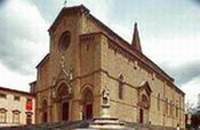 Arezzo historic center lies on the top of the hill and it preserves a distinct Medieval aspect: the Cathedral, the City Palace and the Medici Fortress are praiseworthy examples of times architecture.
Arezzo historic center lies on the top of the hill and it preserves a distinct Medieval aspect: the Cathedral, the City Palace and the Medici Fortress are praiseworthy examples of times architecture.
|
| Cortona (650m s./m.) |
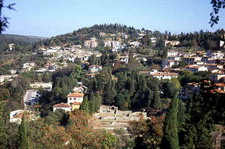 Ancient Etruscan City, Cortona still features part of the ancient rectangular town walls and a rich artistic historical center with the Dome, the Diocesano Museum, the Museum of the Etruscan Academy, the Medicea Fortress and the Gothic church of San Francesco.
Ancient Etruscan City, Cortona still features part of the ancient rectangular town walls and a rich artistic historical center with the Dome, the Diocesano Museum, the Museum of the Etruscan Academy, the Medicea Fortress and the Gothic church of San Francesco. |
| Montevarchi (144m s./m.) |
 The city of Montevarchi is situated in the upper Valdarno, between Florence and Arezzo, on the left bank of the Arno river, in that beautiful territory at the limit of of the hills zone of the Siena Chianti region.
The city of Montevarchi is situated in the upper Valdarno, between Florence and Arezzo, on the left bank of the Arno river, in that beautiful territory at the limit of of the hills zone of the Siena Chianti region. |
| Florence - Firenze (50m s./m.) |
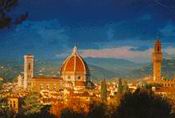 With no doubts one of the most renown towns in the world, Florence owns a unique art heritage both in terms of quantity and variety that is impossible to describe on just four lines.
With no doubts one of the most renown towns in the world, Florence owns a unique art heritage both in terms of quantity and variety that is impossible to describe on just four lines. |
| Florence Chianti Area (200m s./m.) |
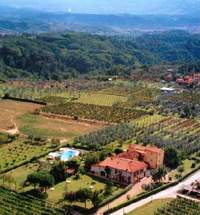 In the Sothern surrounding areas of Florence, the Florentine CHIANTI merged in vineyards, olive groves, and thick woods, among gently sloping, manue-hued green hills offers the most beautiful Landscapes.
In the Sothern surrounding areas of Florence, the Florentine CHIANTI merged in vineyards, olive groves, and thick woods, among gently sloping, manue-hued green hills offers the most beautiful Landscapes.
|
| Empoli (27m s./m.) |
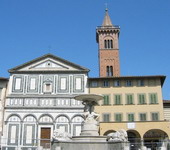 The modern city of Empoli is located along the left bank of the Arno river, in the lower Valdarno plain, encircled by the gentle hills of the typical Tuscany landscape, well connected to Florence - Pisa and Livorno.
The modern city of Empoli is located along the left bank of the Arno river, in the lower Valdarno plain, encircled by the gentle hills of the typical Tuscany landscape, well connected to Florence - Pisa and Livorno. |
| Rignano sull'Arno (118m s./m.) |
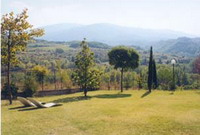 Rignano sull'Arno is located in the immediate vicinities of Florence and it boasts the presence of numerous churches, parrishes, monastries, great label companies of the fashion and an important industrial zone.
Rignano sull'Arno is located in the immediate vicinities of Florence and it boasts the presence of numerous churches, parrishes, monastries, great label companies of the fashion and an important industrial zone. |
| Tavarnelle Val di Pesa (378m s./m.) |
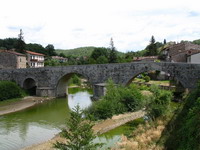 The history of Tavarnelle Val di Pesa is connected to the zone of the Florentine Chianti and to the via Francigena. Originally said Tabernulae, ancient taverne where travellers stopped themselves ro restorate and for the change of the horses along the road to the Val d' Elsa.
The history of Tavarnelle Val di Pesa is connected to the zone of the Florentine Chianti and to the via Francigena. Originally said Tabernulae, ancient taverne where travellers stopped themselves ro restorate and for the change of the horses along the road to the Val d' Elsa. |
| Grosseto (10m s./m.) |
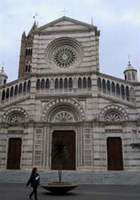 Town of Etruscan origin, located on the right bank of the river Ombrone, Grosseto boasts into the old town its Duomo, the XVI century Medicean Fortress with their exagonal walls.
Town of Etruscan origin, located on the right bank of the river Ombrone, Grosseto boasts into the old town its Duomo, the XVI century Medicean Fortress with their exagonal walls.
|
| Argentario (15m s./m.) |
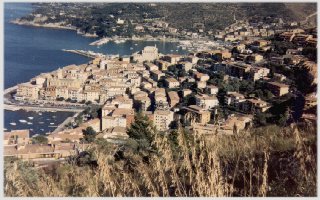 In the south of Tuscany between the blue limpid waters of the Argentario Mount or between the green of olive groves and the vineyards of the Morellino di Scansano, in the more typical Maremma landscape.
In the south of Tuscany between the blue limpid waters of the Argentario Mount or between the green of olive groves and the vineyards of the Morellino di Scansano, in the more typical Maremma landscape.
|
| Saturnia (294m s./m.) |
 In the heart of the Tuscany, in Maremma of Grosseto, rise the thermal complex of Saturnia and the nearby country village of Manciano, the hamlet of Semproniano, and a few kms away are the art cities of south Tuscany.
In the heart of the Tuscany, in Maremma of Grosseto, rise the thermal complex of Saturnia and the nearby country village of Manciano, the hamlet of Semproniano, and a few kms away are the art cities of south Tuscany.
|
| Isle of Elba (5m s./m.) |
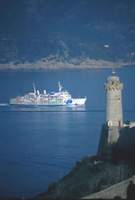 The island offers a variety of picturesque seascapes, between inlets surrounded by woods and small coves towered by rocky cliffs. Elba is the largest island in the Toscana Archipelago (sister islands).
The island offers a variety of picturesque seascapes, between inlets surrounded by woods and small coves towered by rocky cliffs. Elba is the largest island in the Toscana Archipelago (sister islands).
|
| Livorno - Leghorn, Etruscan Riviera (21m s./m.) |
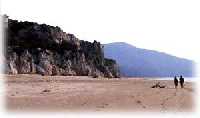 Tyrrhenian coastal seaboard between Leghorn and Piombino, ancient Etruscan settlement. Fascinating, mysterious archaeological finds characterize the area, which differs from the classical landscape of Tuscany.
Tyrrhenian coastal seaboard between Leghorn and Piombino, ancient Etruscan settlement. Fascinating, mysterious archaeological finds characterize the area, which differs from the classical landscape of Tuscany.
|
| Castiglioncello (12m s./m.) |
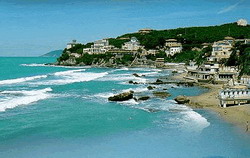 Castiglioncello is placed in a privileged panoramic position, its calm and isolated setting, far away from the main roads, it has remained a pretty resort boasting luxuriant pinewoods and spectacular cliffs.
Castiglioncello is placed in a privileged panoramic position, its calm and isolated setting, far away from the main roads, it has remained a pretty resort boasting luxuriant pinewoods and spectacular cliffs.
|
| Lucca (23m s./m.) |
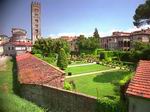 Sheltered by Medieval city walls, it offers an ideal location to visit Tuscany. Its 99 churches within the walls and the Roman Amphitheatre are only a part of the artistic heritage of the town.
Sheltered by Medieval city walls, it offers an ideal location to visit Tuscany. Its 99 churches within the walls and the Roman Amphitheatre are only a part of the artistic heritage of the town.
|
| Bagni di Lucca (152m s./m.) |
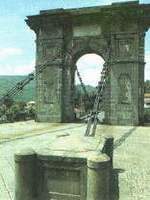 Bagni di Lucca is a charming medioeval town famous for its Baths, it rises along the shores of the Lima torrent that comes down from the Appennines, in a privileged position of great interest not only for its monumens but also for the vicinity to the numerous Tuscan art cities.
Bagni di Lucca is a charming medioeval town famous for its Baths, it rises along the shores of the Lima torrent that comes down from the Appennines, in a privileged position of great interest not only for its monumens but also for the vicinity to the numerous Tuscan art cities.
|
| Camaiore (8m s./m.) |
 A long golden sandy beach lays down between Viareggio and Lido di Camaiore, and its "promenade" full of gardens and bloomed flowers, give a particular charming touch to both cities, very much appreciated from tourists.
A long golden sandy beach lays down between Viareggio and Lido di Camaiore, and its "promenade" full of gardens and bloomed flowers, give a particular charming touch to both cities, very much appreciated from tourists.
|
| Garfagnana (277m s./m.) |
 The Garfagnana is a unique Valley where the more ancient traditions are still lived, where it is still possible to taste the pleasure of flavours elsewhere forgotten, where you still can live at "man dimension".
The Garfagnana is a unique Valley where the more ancient traditions are still lived, where it is still possible to taste the pleasure of flavours elsewhere forgotten, where you still can live at "man dimension".
|
| Montecarlo di Lucca (163m s./m.) |
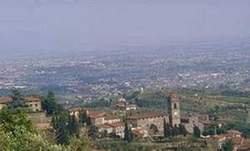 The Lucca plain is encircled from verdant hills on three sides and is the coffer of the beautiful Ville Lucchesi (castles). Good wines such as Montecarlo and Le Colline Lucchesi and excellent olive oil are renommed.
The Lucca plain is encircled from verdant hills on three sides and is the coffer of the beautiful Ville Lucchesi (castles). Good wines such as Montecarlo and Le Colline Lucchesi and excellent olive oil are renommed.
|
| Versilia and Pietrasanta (14m s./m.) |
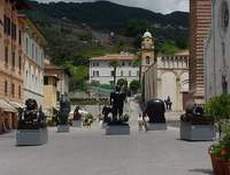 The sunny cities of the coast are renommed for their tourist and cultural vocation. Forte dei Marmi, is renown as the most elegant resort, offering sandy beaches. Pietrasanta is the international center of sculpturing.
The sunny cities of the coast are renommed for their tourist and cultural vocation. Forte dei Marmi, is renown as the most elegant resort, offering sandy beaches. Pietrasanta is the international center of sculpturing.
|
| Viareggio - Lido di Camaiore (2m s./m.) |
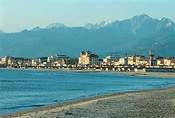 A long golden sandy beach lays down between Viareggio and Lido di Camaiore, and its "promenade" full of gardens and bloomed flowers, give a particular charming touch to both cities, very much appreciated from tourists.
A long golden sandy beach lays down between Viareggio and Lido di Camaiore, and its "promenade" full of gardens and bloomed flowers, give a particular charming touch to both cities, very much appreciated from tourists.
|
| Massa and Marina di Massa (5m s./m.) |
 Its ideal location, between the coast with its pinewoods and the frame made by the Apuan Alps, guarantee a pleasant climate all year round in Massa. Most part of holiday accommodation resorts are set along coast.
Its ideal location, between the coast with its pinewoods and the frame made by the Apuan Alps, guarantee a pleasant climate all year round in Massa. Most part of holiday accommodation resorts are set along coast.
|
| Pisa and surroundings (4m s./m.) |
 The town, unique in the world for its architectural glories, lies on a hook of the river Arno. Pisa was originally built on the coast where it established its leadership as one of the four Italian Maritime Republics.
The town, unique in the world for its architectural glories, lies on a hook of the river Arno. Pisa was originally built on the coast where it established its leadership as one of the four Italian Maritime Republics.
|
| Volterra (531m s./m.) |
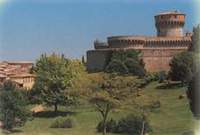 Located in the heart of Tuscany betwwen the sea and to little distance from three Tuscan centers and the most important art cities of the region amid an area of a great landscape suggestion
Located in the heart of Tuscany betwwen the sea and to little distance from three Tuscan centers and the most important art cities of the region amid an area of a great landscape suggestion
. |
| Prato (65m s./m.) |
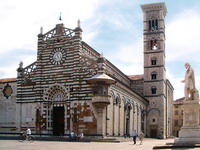 The main city of Prato is home to many museums and it boasts an education centre concerned with contemporary art and other cultural monuments, as the Cathedral of Santo Stefano and the Palazzo Pretorio.
The main city of Prato is home to many museums and it boasts an education centre concerned with contemporary art and other cultural monuments, as the Cathedral of Santo Stefano and the Palazzo Pretorio. |
| Artimino (260m s./m.) |
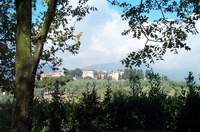 On a hill bordered by olive trees, rows of cypress trees, cluster pine trees, vineyards and here and there a cottage, a tower, a castle: the marvellous Villa Artimino lies with its hundred chimneys and the Paggeria.
On a hill bordered by olive trees, rows of cypress trees, cluster pine trees, vineyards and here and there a cottage, a tower, a castle: the marvellous Villa Artimino lies with its hundred chimneys and the Paggeria.
|
| Pistoia (65m s./m.) |
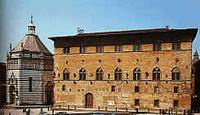 Pistoia is located on a wide plain on the Ombrone River and lies between Monte Albano and the slopes of the Appenines. The city, rich in monuments and medieval architecture, is an important cultural center.
Pistoia is located on a wide plain on the Ombrone River and lies between Monte Albano and the slopes of the Appenines. The city, rich in monuments and medieval architecture, is an important cultural center.
|
| Abetone Appennines (1388m s./m.) |
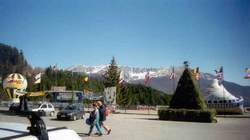 Abetone is the heart of the most famous skiing resorts in the Tuscan-Emilian Appennines with the high peaks that form its crown: Monte Gomito, Val di Luce and Cimone Mount.
Abetone is the heart of the most famous skiing resorts in the Tuscan-Emilian Appennines with the high peaks that form its crown: Monte Gomito, Val di Luce and Cimone Mount.
|
| Borgo a Buggiano (41m s./m.) |
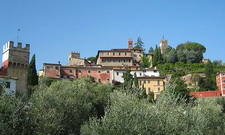 Borgo a Buggiano is a pretty village situated in the center of the Valdinievole, between Pescia and Montecatini Terme, in a tight and lengthened shaped zone that it is entirely crossed by the Cessana torrent.
Borgo a Buggiano is a pretty village situated in the center of the Valdinievole, between Pescia and Montecatini Terme, in a tight and lengthened shaped zone that it is entirely crossed by the Cessana torrent. |
| Monsummano Terme (23m s./m.) |
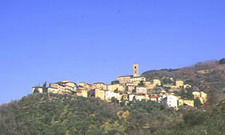 Monsummano Terme is a famous thermal locality in the 'Valdinievole', set 13 km to the south-west of Pistoia that boasts two thermal coves: the Grotta Giusti and the Grotta Parlanti.
Monsummano Terme is a famous thermal locality in the 'Valdinievole', set 13 km to the south-west of Pistoia that boasts two thermal coves: the Grotta Giusti and the Grotta Parlanti. |
| Montecatini Terme (62m s./m.) |
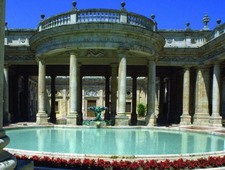 Montecatini Terme is one of the most renowned thermal stations in Europe, situated in the 'Valdinievole' in the center of Tuscany, between the airports of Florence and Pisa.
Montecatini Terme is one of the most renowned thermal stations in Europe, situated in the 'Valdinievole' in the center of Tuscany, between the airports of Florence and Pisa. |
| San Baronto (349m s./m.) |
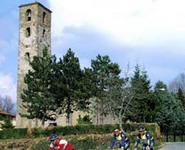 San Baronto is situated along the pass that from the Montalbano comes down towards the plain of Pistoia and Prato, little distant from Vinci, stretched around the medieval Castle and famous for being Leonardo's birthplace.
San Baronto is situated along the pass that from the Montalbano comes down towards the plain of Pistoia and Prato, little distant from Vinci, stretched around the medieval Castle and famous for being Leonardo's birthplace. |
| Siena (322m s./m.) |
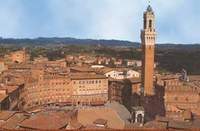 Renowned historical centre on the top of a hill, Siena was an ancient Etruscan settlement. Piazza del Campo, where every summer the famous Palio takes place, is undoutedly one of the most beautiful squares in Europe.
Renowned historical centre on the top of a hill, Siena was an ancient Etruscan settlement. Piazza del Campo, where every summer the famous Palio takes place, is undoutedly one of the most beautiful squares in Europe.
|
| Castelnuovo Berardenga (351m s./m.) |
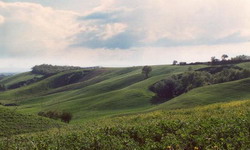 Castelnuovo Berardenga is situated between the fertile hills of Chianti and the incredible landscape of Crete that encircle Siena. In the outskirtses you can admire medieval testimonies, historic villas and country farms.
Castelnuovo Berardenga is situated between the fertile hills of Chianti and the incredible landscape of Crete that encircle Siena. In the outskirtses you can admire medieval testimonies, historic villas and country farms. |
| Montepulciano (605m s./m.) |
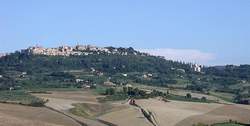 Montepulciano is famous for its renommed wine "Nobile". The town is said to have been founded by the Etruscan king Porsenna and exhibits impressive architecture, mainly but not only of the "Renaissance".
Montepulciano is famous for its renommed wine "Nobile". The town is said to have been founded by the Etruscan king Porsenna and exhibits impressive architecture, mainly but not only of the "Renaissance".
|
| Pienza (491m s./m.) |
 The town one of Pienza owes its name of Corsinianus, according to some historians, one of the militaries of Silla while others make it go up to Bacco Piccolomini, combined of Porsenna in the war against old Rome.
The town one of Pienza owes its name of Corsinianus, according to some historians, one of the militaries of Silla while others make it go up to Bacco Piccolomini, combined of Porsenna in the war against old Rome.
|
| San Gimignano (567m s./m.) |
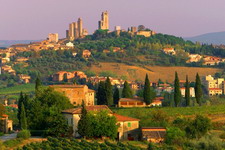 San Gimignano is "the city of the beautiful Towers" the monuments that represented the power of competition and great honour. Nowadays they have only remained 13 of these imposing towers erected for being higher one to the other.
San Gimignano is "the city of the beautiful Towers" the monuments that represented the power of competition and great honour. Nowadays they have only remained 13 of these imposing towers erected for being higher one to the other. |
| Sinalunga (364m s./m.) |
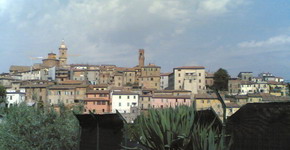 The splendid small city of Sinalunga rises on the hills that separate the Val di Chiana from Valley of the Ombrone, in the center of Tuscany, at little less than 50 kilometers from Siena.
The splendid small city of Sinalunga rises on the hills that separate the Val di Chiana from Valley of the Ombrone, in the center of Tuscany, at little less than 50 kilometers from Siena. |
| Sovicille (265m s./m.) |
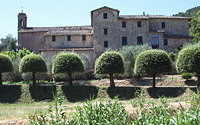 Immersed in a superb landscape, Sovicille by Siena is one of the leading centres in the Chianti region, set amid the small art cities of the Val d’Elsa, Siena and the charming San Gimignano.
Immersed in a superb landscape, Sovicille by Siena is one of the leading centres in the Chianti region, set amid the small art cities of the Val d’Elsa, Siena and the charming San Gimignano.
|
|
|

 Arezzo historic center lies on the top of the hill and it preserves a distinct Medieval aspect: the Cathedral, the City Palace and the Medici Fortress are praiseworthy examples of times architecture.
Arezzo historic center lies on the top of the hill and it preserves a distinct Medieval aspect: the Cathedral, the City Palace and the Medici Fortress are praiseworthy examples of times architecture. Ancient Etruscan City, Cortona still features part of the ancient rectangular town walls and a rich artistic historical center with the Dome, the Diocesano Museum, the Museum of the Etruscan Academy, the Medicea Fortress and the Gothic church of San Francesco.
Ancient Etruscan City, Cortona still features part of the ancient rectangular town walls and a rich artistic historical center with the Dome, the Diocesano Museum, the Museum of the Etruscan Academy, the Medicea Fortress and the Gothic church of San Francesco. The city of Montevarchi is situated in the upper Valdarno, between Florence and Arezzo, on the left bank of the Arno river, in that beautiful territory at the limit of of the hills zone of the Siena Chianti region.
The city of Montevarchi is situated in the upper Valdarno, between Florence and Arezzo, on the left bank of the Arno river, in that beautiful territory at the limit of of the hills zone of the Siena Chianti region. With no doubts one of the most renown towns in the world, Florence owns a unique art heritage both in terms of quantity and variety that is impossible to describe on just four lines.
With no doubts one of the most renown towns in the world, Florence owns a unique art heritage both in terms of quantity and variety that is impossible to describe on just four lines.  In the Sothern surrounding areas of Florence, the Florentine CHIANTI merged in vineyards, olive groves, and thick woods, among gently sloping, manue-hued green hills offers the most beautiful Landscapes.
In the Sothern surrounding areas of Florence, the Florentine CHIANTI merged in vineyards, olive groves, and thick woods, among gently sloping, manue-hued green hills offers the most beautiful Landscapes.  The modern city of Empoli is located along the left bank of the Arno river, in the lower Valdarno plain, encircled by the gentle hills of the typical Tuscany landscape, well connected to Florence - Pisa and Livorno.
The modern city of Empoli is located along the left bank of the Arno river, in the lower Valdarno plain, encircled by the gentle hills of the typical Tuscany landscape, well connected to Florence - Pisa and Livorno. Rignano sull'Arno is located in the immediate vicinities of Florence and it boasts the presence of numerous churches, parrishes, monastries, great label companies of the fashion and an important industrial zone.
Rignano sull'Arno is located in the immediate vicinities of Florence and it boasts the presence of numerous churches, parrishes, monastries, great label companies of the fashion and an important industrial zone. The history of Tavarnelle Val di Pesa is connected to the zone of the Florentine Chianti and to the via Francigena. Originally said Tabernulae, ancient taverne where travellers stopped themselves ro restorate and for the change of the horses along the road to the Val d' Elsa.
The history of Tavarnelle Val di Pesa is connected to the zone of the Florentine Chianti and to the via Francigena. Originally said Tabernulae, ancient taverne where travellers stopped themselves ro restorate and for the change of the horses along the road to the Val d' Elsa. Town of Etruscan origin, located on the right bank of the river Ombrone, Grosseto boasts into the old town its Duomo, the XVI century Medicean Fortress with their exagonal walls.
Town of Etruscan origin, located on the right bank of the river Ombrone, Grosseto boasts into the old town its Duomo, the XVI century Medicean Fortress with their exagonal walls.  In the south of Tuscany between the blue limpid waters of the Argentario Mount or between the green of olive groves and the vineyards of the Morellino di Scansano, in the more typical Maremma landscape.
In the south of Tuscany between the blue limpid waters of the Argentario Mount or between the green of olive groves and the vineyards of the Morellino di Scansano, in the more typical Maremma landscape.  Isle of Giglio in the deep blue Thyrrenian sea boasts one of the cleanest cristal clear waters of Italy.
Isle of Giglio in the deep blue Thyrrenian sea boasts one of the cleanest cristal clear waters of Italy. In the heart of the Tuscany, in Maremma of Grosseto, rise the thermal complex of Saturnia and the nearby country village of Manciano, the hamlet of Semproniano, and a few kms away are the art cities of south Tuscany.
In the heart of the Tuscany, in Maremma of Grosseto, rise the thermal complex of Saturnia and the nearby country village of Manciano, the hamlet of Semproniano, and a few kms away are the art cities of south Tuscany.  The island offers a variety of picturesque seascapes, between inlets surrounded by woods and small coves towered by rocky cliffs. Elba is the largest island in the Toscana Archipelago (sister islands).
The island offers a variety of picturesque seascapes, between inlets surrounded by woods and small coves towered by rocky cliffs. Elba is the largest island in the Toscana Archipelago (sister islands).  Tyrrhenian coastal seaboard between Leghorn and Piombino, ancient Etruscan settlement. Fascinating, mysterious archaeological finds characterize the area, which differs from the classical landscape of Tuscany.
Tyrrhenian coastal seaboard between Leghorn and Piombino, ancient Etruscan settlement. Fascinating, mysterious archaeological finds characterize the area, which differs from the classical landscape of Tuscany.  Castiglioncello is placed in a privileged panoramic position, its calm and isolated setting, far away from the main roads, it has remained a pretty resort boasting luxuriant pinewoods and spectacular cliffs.
Castiglioncello is placed in a privileged panoramic position, its calm and isolated setting, far away from the main roads, it has remained a pretty resort boasting luxuriant pinewoods and spectacular cliffs. Sheltered by Medieval city walls, it offers an ideal location to visit Tuscany. Its 99 churches within the walls and the Roman Amphitheatre are only a part of the artistic heritage of the town.
Sheltered by Medieval city walls, it offers an ideal location to visit Tuscany. Its 99 churches within the walls and the Roman Amphitheatre are only a part of the artistic heritage of the town.  Bagni di Lucca is a charming medioeval town famous for its Baths, it rises along the shores of the Lima torrent that comes down from the Appennines, in a privileged position of great interest not only for its monumens but also for the vicinity to the numerous Tuscan art cities.
Bagni di Lucca is a charming medioeval town famous for its Baths, it rises along the shores of the Lima torrent that comes down from the Appennines, in a privileged position of great interest not only for its monumens but also for the vicinity to the numerous Tuscan art cities. A long golden sandy beach lays down between Viareggio and Lido di Camaiore, and its "promenade" full of gardens and bloomed flowers, give a particular charming touch to both cities, very much appreciated from tourists.
A long golden sandy beach lays down between Viareggio and Lido di Camaiore, and its "promenade" full of gardens and bloomed flowers, give a particular charming touch to both cities, very much appreciated from tourists.  The Garfagnana is a unique Valley where the more ancient traditions are still lived, where it is still possible to taste the pleasure of flavours elsewhere forgotten, where you still can live at "man dimension".
The Garfagnana is a unique Valley where the more ancient traditions are still lived, where it is still possible to taste the pleasure of flavours elsewhere forgotten, where you still can live at "man dimension".  The Lucca plain is encircled from verdant hills on three sides and is the coffer of the beautiful Ville Lucchesi (castles). Good wines such as Montecarlo and Le Colline Lucchesi and excellent olive oil are renommed.
The Lucca plain is encircled from verdant hills on three sides and is the coffer of the beautiful Ville Lucchesi (castles). Good wines such as Montecarlo and Le Colline Lucchesi and excellent olive oil are renommed.  The sunny cities of the coast are renommed for their tourist and cultural vocation. Forte dei Marmi, is renown as the most elegant resort, offering sandy beaches. Pietrasanta is the international center of sculpturing.
The sunny cities of the coast are renommed for their tourist and cultural vocation. Forte dei Marmi, is renown as the most elegant resort, offering sandy beaches. Pietrasanta is the international center of sculpturing.  A long golden sandy beach lays down between Viareggio and Lido di Camaiore, and its "promenade" full of gardens and bloomed flowers, give a particular charming touch to both cities, very much appreciated from tourists.
A long golden sandy beach lays down between Viareggio and Lido di Camaiore, and its "promenade" full of gardens and bloomed flowers, give a particular charming touch to both cities, very much appreciated from tourists.  Its ideal location, between the coast with its pinewoods and the frame made by the Apuan Alps, guarantee a pleasant climate all year round in Massa. Most part of holiday accommodation resorts are set along coast.
Its ideal location, between the coast with its pinewoods and the frame made by the Apuan Alps, guarantee a pleasant climate all year round in Massa. Most part of holiday accommodation resorts are set along coast.  The town, unique in the world for its architectural glories, lies on a hook of the river Arno. Pisa was originally built on the coast where it established its leadership as one of the four Italian Maritime Republics.
The town, unique in the world for its architectural glories, lies on a hook of the river Arno. Pisa was originally built on the coast where it established its leadership as one of the four Italian Maritime Republics.  Located in the heart of Tuscany betwwen the sea and to little distance from three Tuscan centers and the most important art cities of the region amid an area of a great landscape suggestion
Located in the heart of Tuscany betwwen the sea and to little distance from three Tuscan centers and the most important art cities of the region amid an area of a great landscape suggestion  The main city of Prato is home to many museums and it boasts an education centre concerned with contemporary art and other cultural monuments, as the Cathedral of Santo Stefano and the Palazzo Pretorio.
The main city of Prato is home to many museums and it boasts an education centre concerned with contemporary art and other cultural monuments, as the Cathedral of Santo Stefano and the Palazzo Pretorio. On a hill bordered by olive trees, rows of cypress trees, cluster pine trees, vineyards and here and there a cottage, a tower, a castle: the marvellous Villa Artimino lies with its hundred chimneys and the Paggeria.
On a hill bordered by olive trees, rows of cypress trees, cluster pine trees, vineyards and here and there a cottage, a tower, a castle: the marvellous Villa Artimino lies with its hundred chimneys and the Paggeria.  Pistoia is located on a wide plain on the Ombrone River and lies between Monte Albano and the slopes of the Appenines. The city, rich in monuments and medieval architecture, is an important cultural center.
Pistoia is located on a wide plain on the Ombrone River and lies between Monte Albano and the slopes of the Appenines. The city, rich in monuments and medieval architecture, is an important cultural center. Abetone is the heart of the most famous skiing resorts in the Tuscan-Emilian Appennines with the high peaks that form its crown: Monte Gomito, Val di Luce and Cimone Mount.
Abetone is the heart of the most famous skiing resorts in the Tuscan-Emilian Appennines with the high peaks that form its crown: Monte Gomito, Val di Luce and Cimone Mount.  Borgo a Buggiano is a pretty village situated in the center of the Valdinievole, between Pescia and Montecatini Terme, in a tight and lengthened shaped zone that it is entirely crossed by the Cessana torrent.
Borgo a Buggiano is a pretty village situated in the center of the Valdinievole, between Pescia and Montecatini Terme, in a tight and lengthened shaped zone that it is entirely crossed by the Cessana torrent. Monsummano Terme is a famous thermal locality in the 'Valdinievole', set 13 km to the south-west of Pistoia that boasts two thermal coves: the Grotta Giusti and the Grotta Parlanti.
Monsummano Terme is a famous thermal locality in the 'Valdinievole', set 13 km to the south-west of Pistoia that boasts two thermal coves: the Grotta Giusti and the Grotta Parlanti. Montecatini Terme is one of the most renowned thermal stations in Europe, situated in the 'Valdinievole' in the center of Tuscany, between the airports of Florence and Pisa.
Montecatini Terme is one of the most renowned thermal stations in Europe, situated in the 'Valdinievole' in the center of Tuscany, between the airports of Florence and Pisa. San Baronto is situated along the pass that from the Montalbano comes down towards the plain of Pistoia and Prato, little distant from Vinci, stretched around the medieval Castle and famous for being Leonardo's birthplace.
San Baronto is situated along the pass that from the Montalbano comes down towards the plain of Pistoia and Prato, little distant from Vinci, stretched around the medieval Castle and famous for being Leonardo's birthplace. Renowned historical centre on the top of a hill, Siena was an ancient Etruscan settlement. Piazza del Campo, where every summer the famous Palio takes place, is undoutedly one of the most beautiful squares in Europe.
Renowned historical centre on the top of a hill, Siena was an ancient Etruscan settlement. Piazza del Campo, where every summer the famous Palio takes place, is undoutedly one of the most beautiful squares in Europe.  Castelnuovo Berardenga is situated between the fertile hills of Chianti and the incredible landscape of Crete that encircle Siena. In the outskirtses you can admire medieval testimonies, historic villas and country farms.
Castelnuovo Berardenga is situated between the fertile hills of Chianti and the incredible landscape of Crete that encircle Siena. In the outskirtses you can admire medieval testimonies, historic villas and country farms. Montepulciano is famous for its renommed wine "Nobile". The town is said to have been founded by the Etruscan king Porsenna and exhibits impressive architecture, mainly but not only of the "Renaissance".
Montepulciano is famous for its renommed wine "Nobile". The town is said to have been founded by the Etruscan king Porsenna and exhibits impressive architecture, mainly but not only of the "Renaissance". The town one of Pienza owes its name of Corsinianus, according to some historians, one of the militaries of Silla while others make it go up to Bacco Piccolomini, combined of Porsenna in the war against old Rome.
The town one of Pienza owes its name of Corsinianus, according to some historians, one of the militaries of Silla while others make it go up to Bacco Piccolomini, combined of Porsenna in the war against old Rome. San Gimignano is "the city of the beautiful Towers" the monuments that represented the power of competition and great honour. Nowadays they have only remained 13 of these imposing towers erected for being higher one to the other.
San Gimignano is "the city of the beautiful Towers" the monuments that represented the power of competition and great honour. Nowadays they have only remained 13 of these imposing towers erected for being higher one to the other. The splendid small city of Sinalunga rises on the hills that separate the Val di Chiana from Valley of the Ombrone, in the center of Tuscany, at little less than 50 kilometers from Siena.
The splendid small city of Sinalunga rises on the hills that separate the Val di Chiana from Valley of the Ombrone, in the center of Tuscany, at little less than 50 kilometers from Siena. Immersed in a superb landscape, Sovicille by Siena is one of the leading centres in the Chianti region, set amid the small art cities of the Val d’Elsa, Siena and the charming San Gimignano.
Immersed in a superb landscape, Sovicille by Siena is one of the leading centres in the Chianti region, set amid the small art cities of the Val d’Elsa, Siena and the charming San Gimignano.